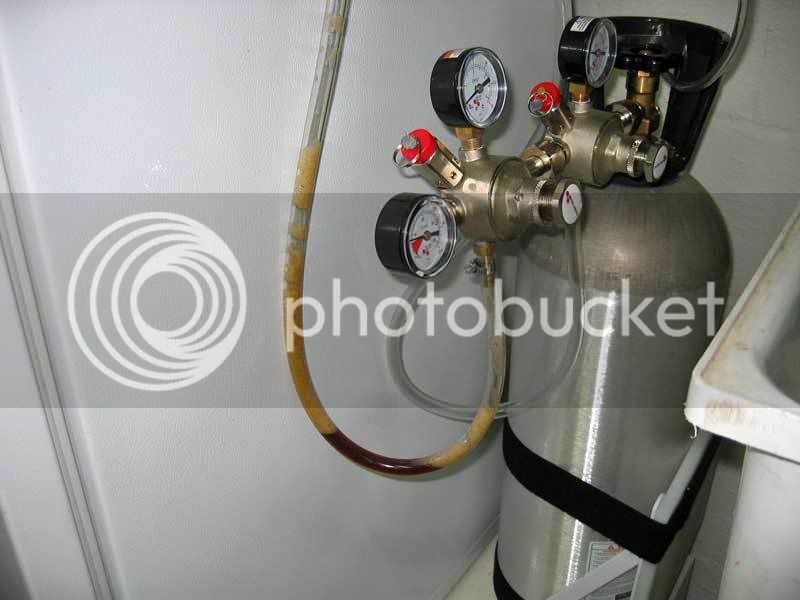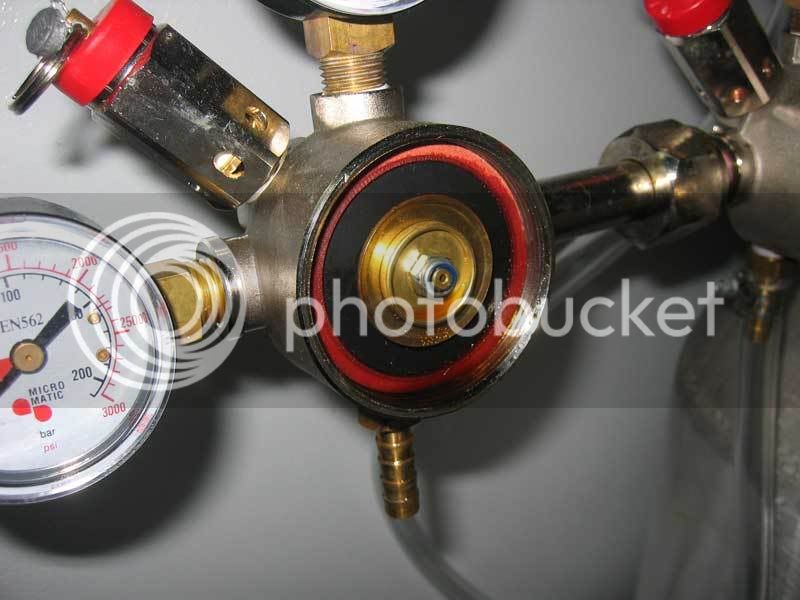Bizoune
Well-Known Member
So I've got some brass fittings, ball valves, barbs the whole bit. Any reason why I shouldn't build one myself for half of what it would cost me at a homebrew shop? Anything specific that I should watch out for?

I made mine out of a couple distribution blocks (1 into 2) from harbor freight, 99 cents each. I did spring for the shut-off check valves for each line though.
No reason not to. I've already done it myself. I would recommend check valves as already mentioned. I believe I got mine from Kegconnection.com? It was a while ago, though.So I've got some brass fittings, ball valves, barbs the whole bit. Any reason why I shouldn't build one myself for half of what it would cost me at a homebrew shop? Anything specific that I should watch out for?
Where did you get the shut off check valves? I put together the same thing but I used inline check valves so its not very pretty.
I made mine out of a couple distribution blocks (1 into 2) from harbor freight, 99 cents each. I did spring for the shut-off check valves for each line though.
Where did you get the shut off check valves? I put together the same thing but I used inline check valves so its not very pretty.

Can I ask, why the check valves? The "gas in" tube is well above the level of the beer. How would you get backflow, even with a loss of pressure? Not trying to be a smartazz, just trying to understand it.
Can I ask, why the check valves? The "gas in" tube is well above the level of the beer. How would you get backflow, even with a loss of pressure? Not trying to be a smartazz, just trying to understand it.
Really don't understand how you would get beer in the gas line. The tube on the gas in port is about 1 inch long and when I fill up a keg there is at least an inch if not more between the gas tube and the beer. So whats it do jump up into the dip tube?
That's kinda what I was getting at.
I guess people are filling their kegs to the brim or above the gas tube.
Here's what I use-

http://www.harborfreight.com/cpi/ctaf/displayitem.taf?Itemnumber=96398
Add quick connects at both sides, and a plug underneath.
But I think a check valve is about $2. It beats trying to clean out your regulator. Having said that, I'm sure there are loads of people that don't use them and haven't had problems. I just choose the 'better safe than sorry' route.
Here's what I use-

http://www.harborfreight.com/cpi/ctaf/displayitem.taf?Itemnumber=96398
Add quick connects at both sides, and a plug underneath.
I actually thought my shutoff valves had check valves. I also couldn't understand how beer could back up into the system. Boy was I mistaken on both fronts.Having said that, I'm sure there are loads of people that don't use them and haven't had problems. I just choose the 'better safe than sorry' route.


This manifold says it has a 1/4" male inlet. Where? I'm assuming the open inlet on the bottom is indeed the inlet and there is not one hidden on the other side. Chucke, are there 5 or 6 holes in this manifold?
Where I'm from, it's impossible to get under 15$ a pop. Souldn't hardware stores have this?
There are a total of 7 holes.
4 for the Quick Connects that are attached.
Then there's the hole on the right side that's seen. There are 2 that are unseen, one on the left side and one underneath.
Chucke, Can you tell me where you bought the male disconnects for attaching to the female disconnects on the manifold. I think this is a pretty good setup and wouldn't mind emulating it. Thanks!
Really don't understand how you would get beer in the gas line. The tube on the gas in port is about 1 inch long and when I fill up a keg there is at least an inch if not more between the gas tube and the beer. So whats it do jump up into the dip tube? I fill up to the top weld on the keg.





This coupling fits into the Quick Connects that are on the manifold.

(1/4” QC x 1/4” NPT)
It is sold at HD and Lowes in the same area where they sell compressors.
While you’re in the compressor area, buy two of these

(1/4” QC x 1/4” NPT) for the empty holes on either side of the manifold.
Then you need to connect to your hose. Assuming ¼” ID tubing, go to the plumbing section where they have a crapload of brass fittings mounted on the wall. Get this

(1/4” NPT x 1/4” hose barb)
The male threaded end should screw into the first coupling. (One end is male and the other is female. If they’re out of one, just switch male/females around.)
Also, get enough ¼” ID pressure rated hose to go to the kegs. (Ask the guy that works there.)
You’ll need a ¼” brass plug for the hole in the back.

It will be in plumbing area with the other brass fittings on the wall.
Then, this goes on the other end of the 1/4" ID hose to connect to the Corney keg.

(1/4” hose barb x gas side)
Teflon tape for all the screw connections and hose clamps for all hose/barb connections.
Methinks that does it.
You referred to the first picture as a (1/4” QC x 1/4” NPT). It looks more like a 1/4" compression fitting x 1/4" male QC. Is that correct? Thanks, this is very helpful.
I too made mine from the blue manifold blocks from Harbor Freight as well. My check/ball valves are from the CHI company Item:05G07313
I have 2 regulators connected one to each block so I can have multiple pressures available. They connect very easy as well. If you use these, most likely the black plugs they have will leak. Don't rely on them.

This is my Harbor Freight manifold with the CHI Company ball valves w/check valves. I have another with 2 valves on the other side of the kegerator for soda/force carbonating beer.

Yes the co2 flow is from the 1/4 MPT >>>> 1/4 barb. This prevents the co2 from blowing back out of the keg.....
Thanks. Just to be sure, does each block have four holes, and are they all 1/4" NPTF? I cannot really tell for sure from your picture or the Harbor Freight one. If I get one, I want to make sure I get the correct fittings. Would I need, from the gas line in, a
- barb x 1/4" NPTM to block
- 1/4 NPTM x barb check valve (two, one for each output)
- 1/4 NPTM plug (to replace the rubber one)?
Actually, I will probably jump two of them together with a 1/4 NPTM x 1/4 NPTM nipple, but if I know the precise configuration for one, I can figure that out. Thanks again.
I use sanke's, so the check valves are built in.
This coupling fits into the Quick Connects that are on the manifold.

(1/4 QC x 1/4 NPT)
It is sold at HD and Lowes in the same area where they sell compressors.
While youre in the compressor area, buy two of these

(1/4 QC x 1/4 NPT) for the empty holes on either side of the manifold.
Then you need to connect to your hose. Assuming ¼ ID tubing, go to the plumbing section where they have a crapload of brass fittings mounted on the wall. Get this

(1/4 NPT x 1/4 hose barb)
The male threaded end should screw into the first coupling. (One end is male and the other is female. If theyre out of one, just switch male/females around.)
Also, get enough ¼ ID pressure rated hose to go to the kegs. (Ask the guy that works there.)
Youll need a ¼ brass plug for the hole in the back.

It will be in plumbing area with the other brass fittings on the wall.
Then, this goes on the other end of the 1/4" ID hose to connect to the Corney keg.

(1/4 hose barb x gas side)
Teflon tape for all the screw connections and hose clamps for all hose/barb connections.
Methinks that does it.
Enter your email address to join: